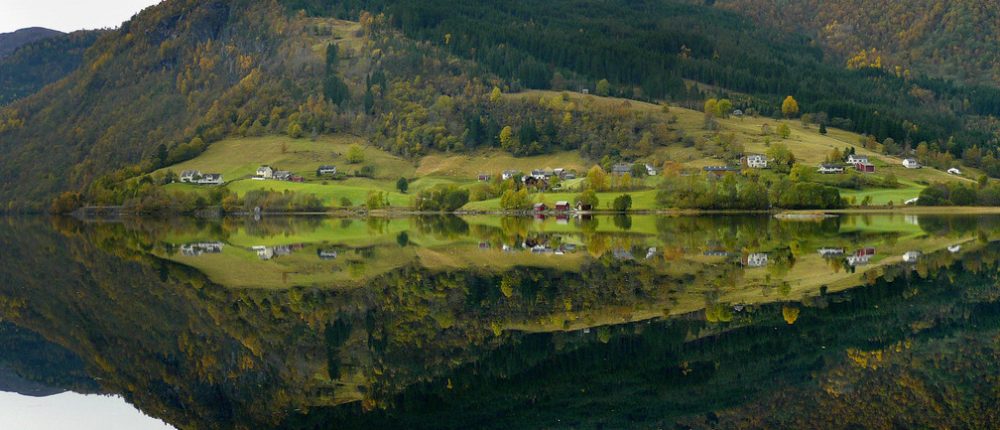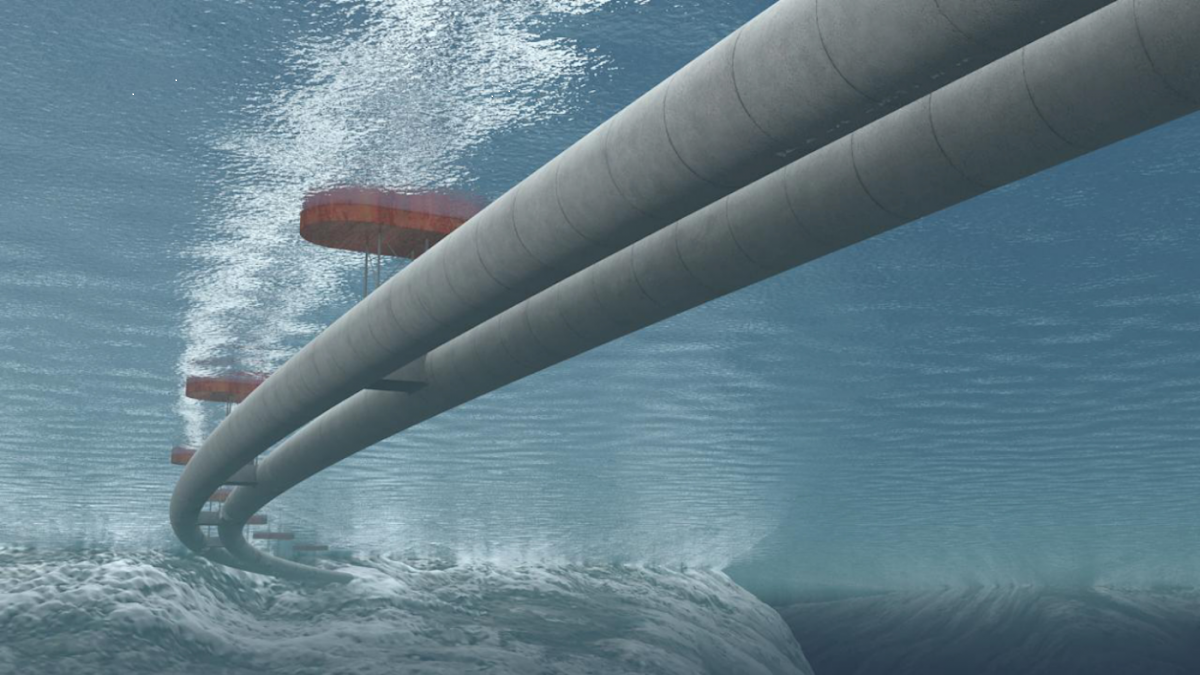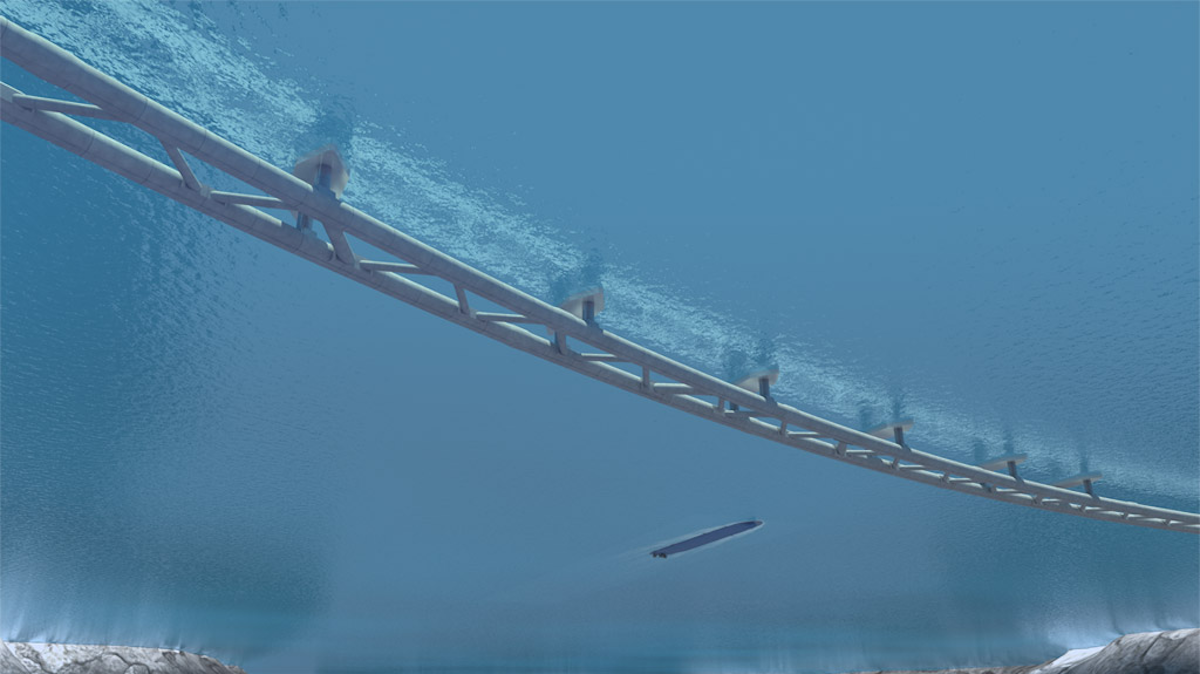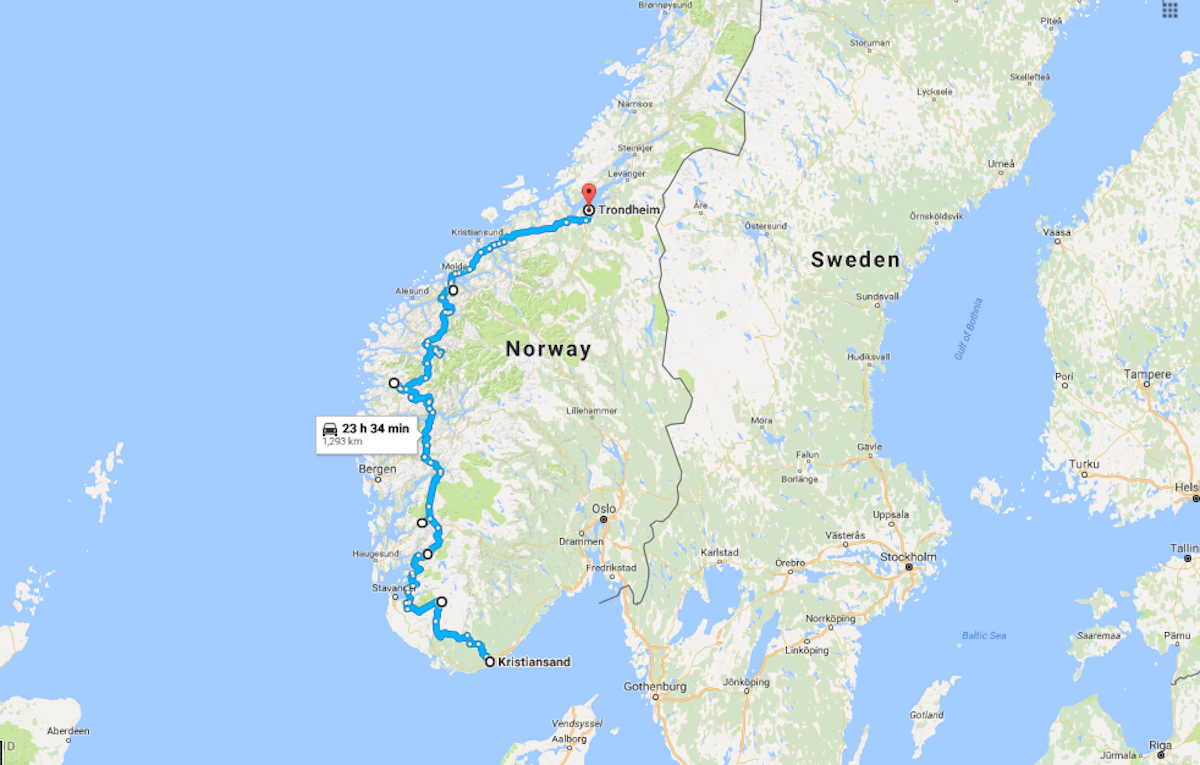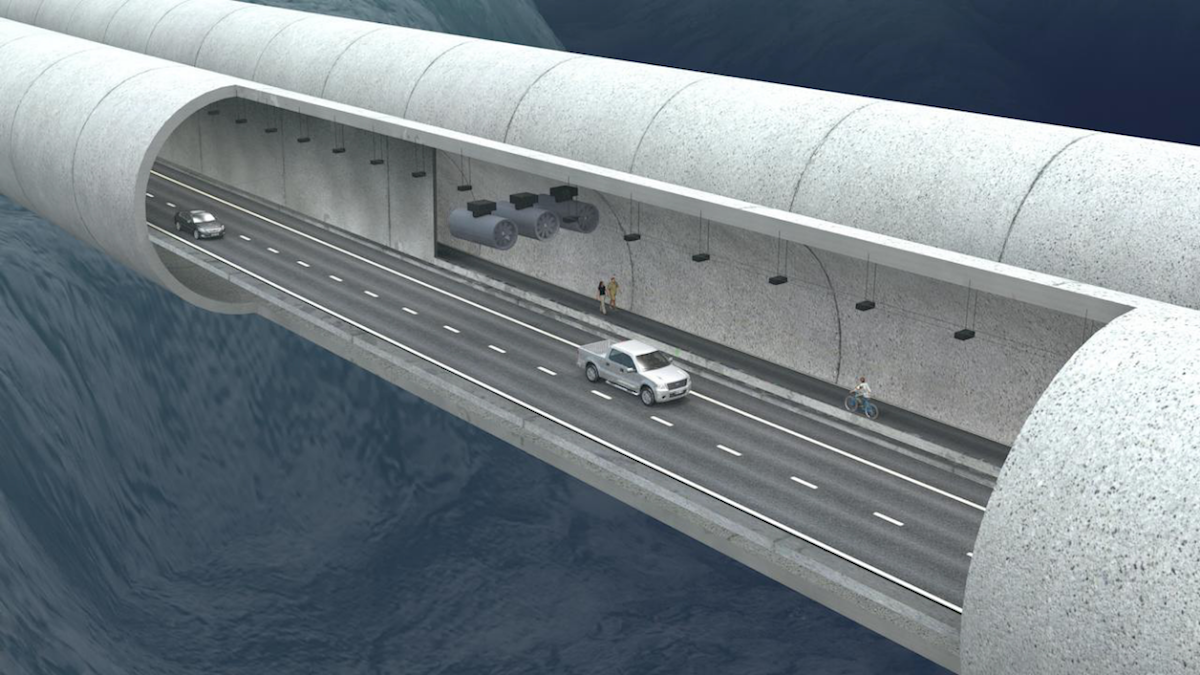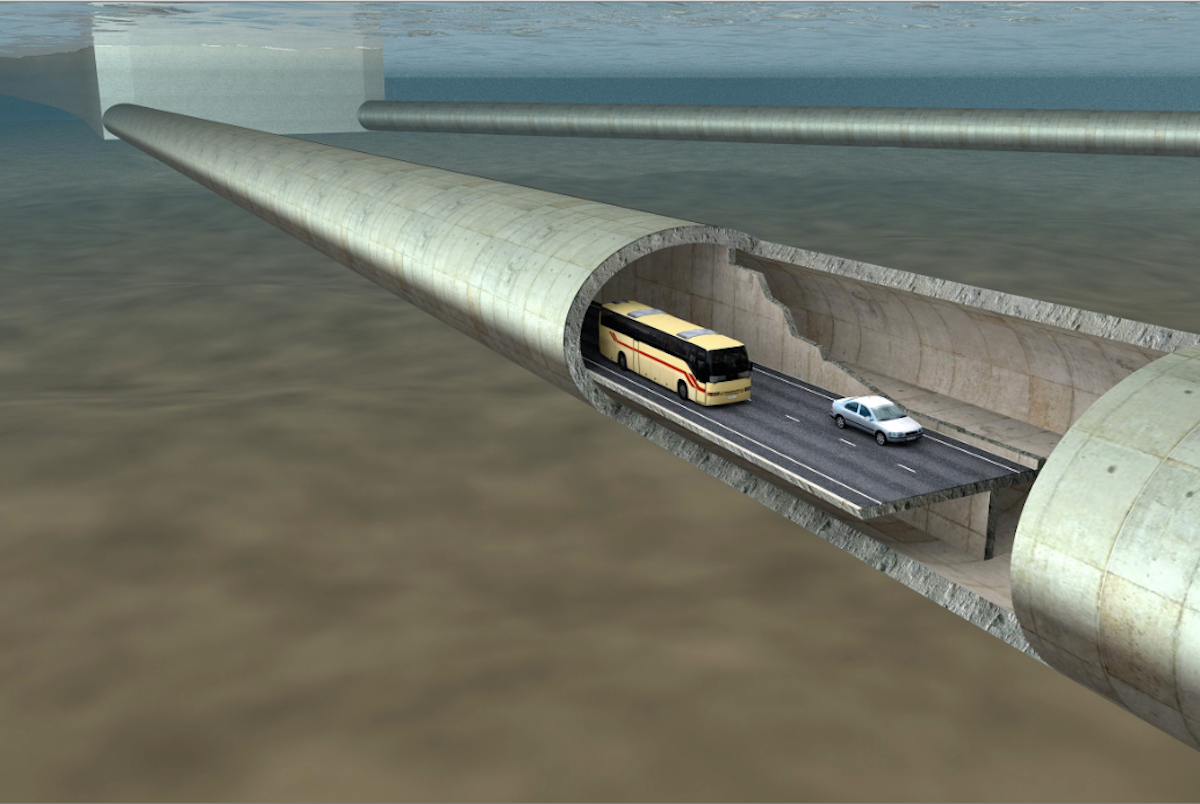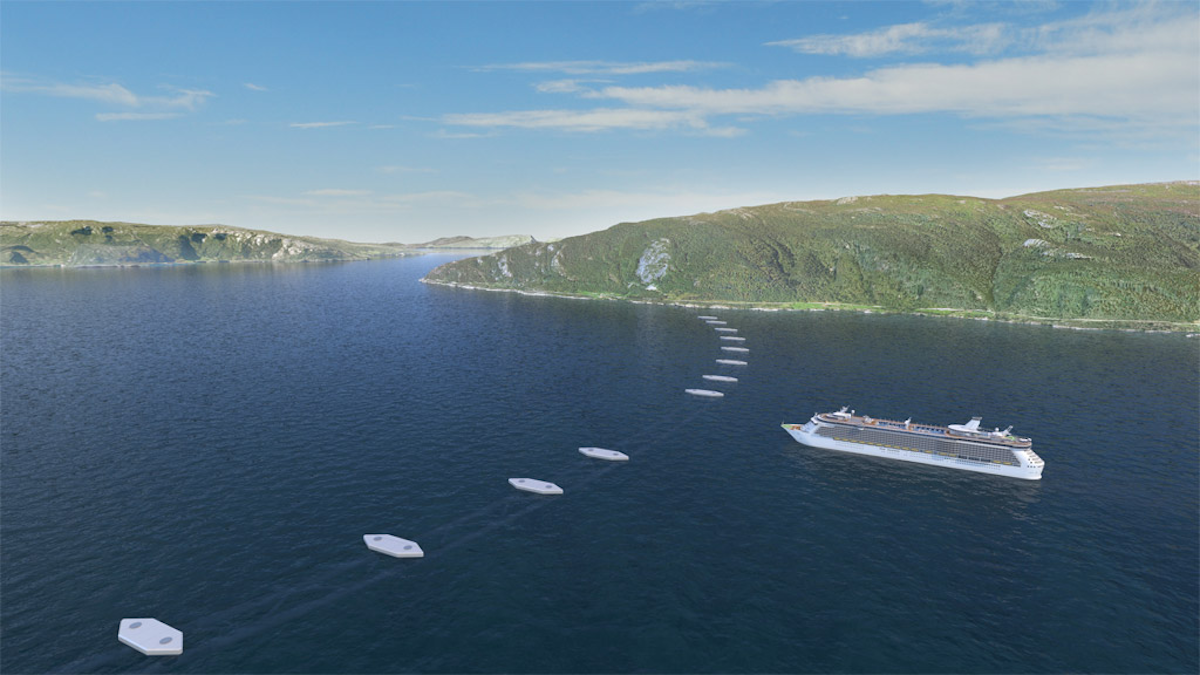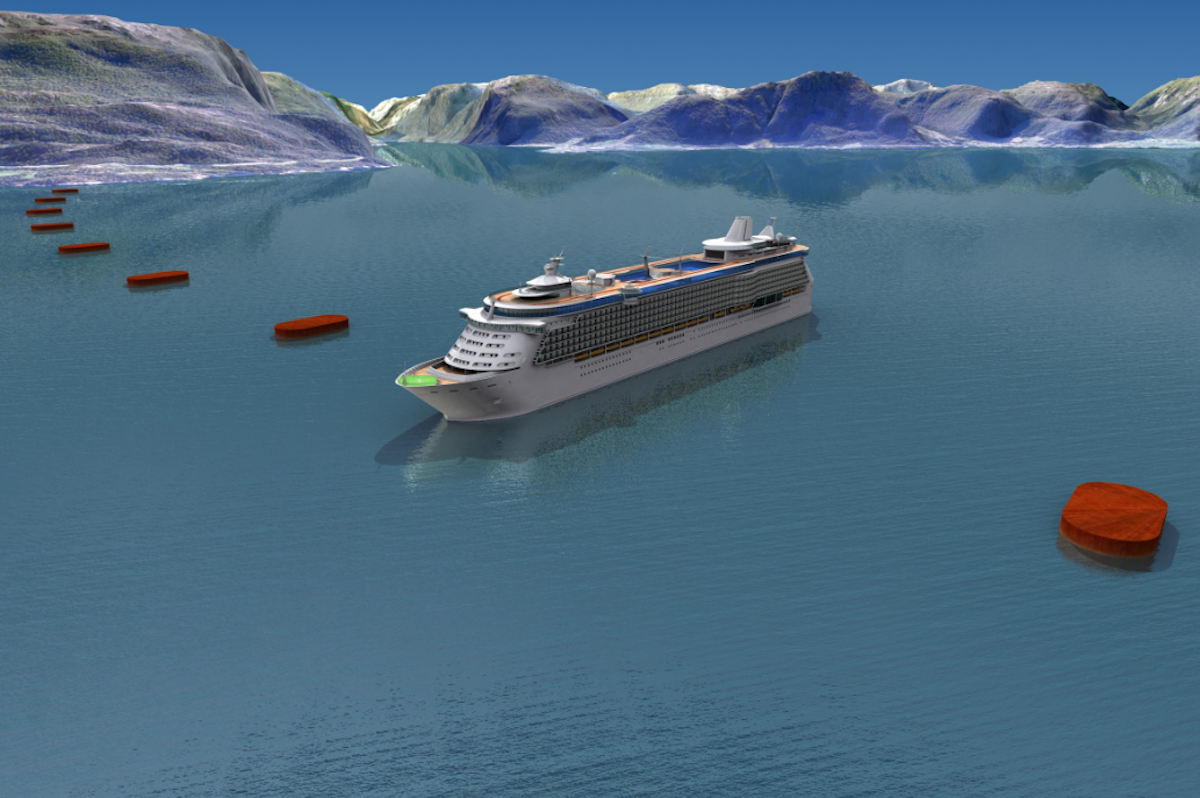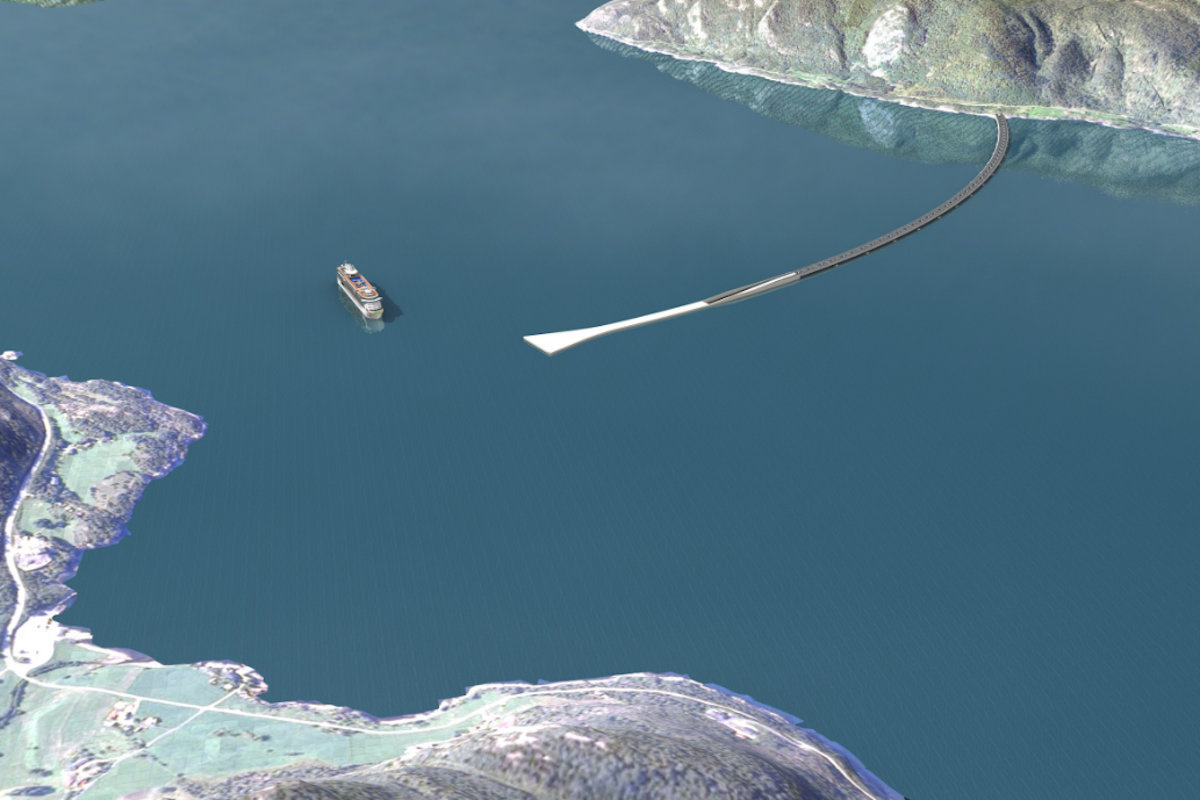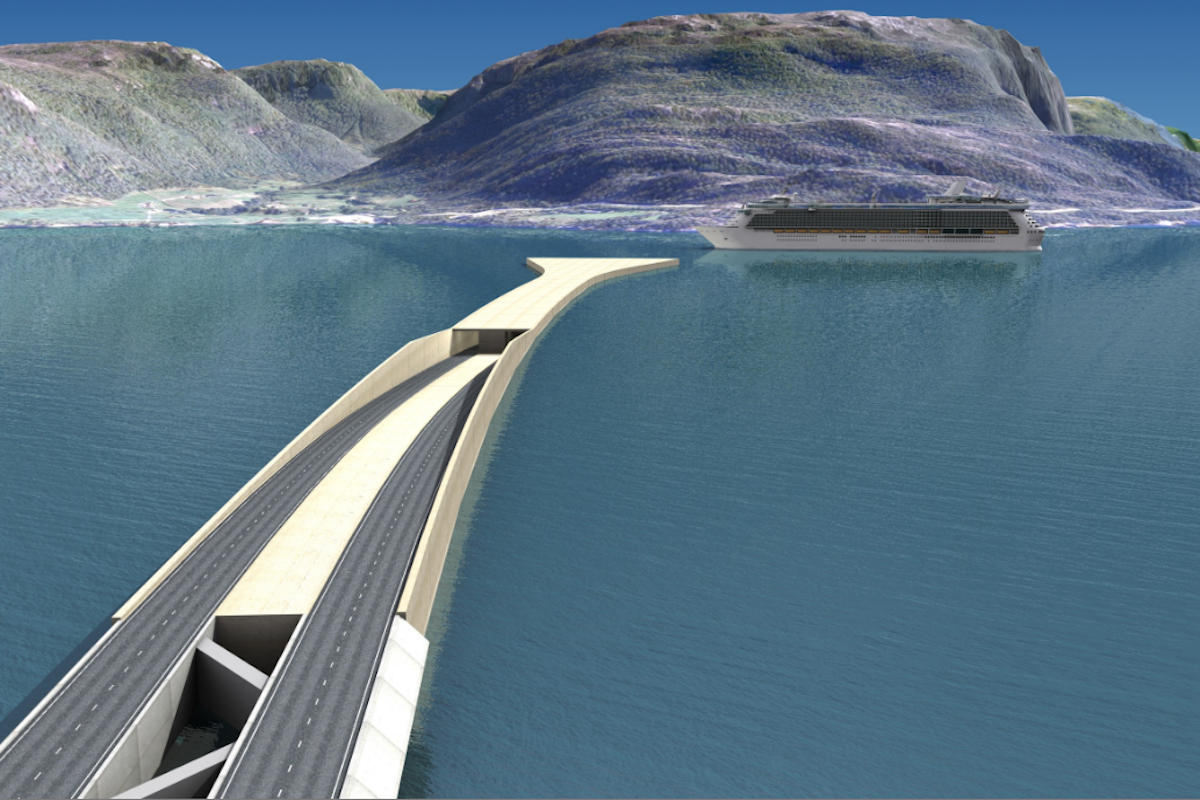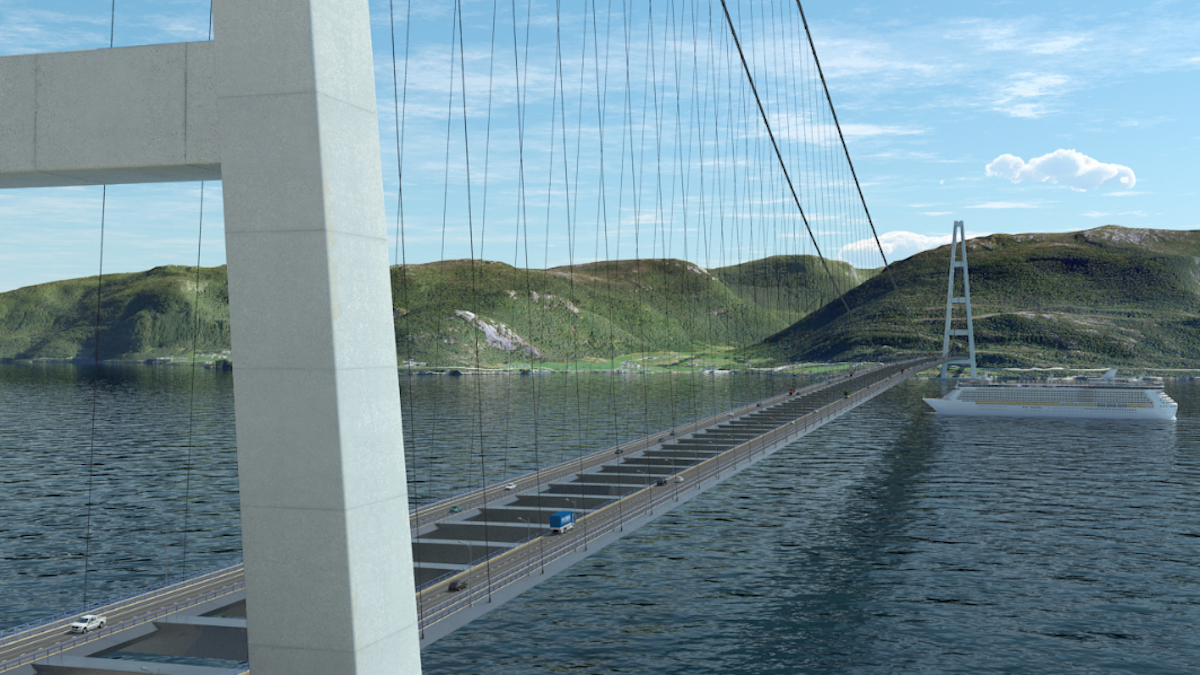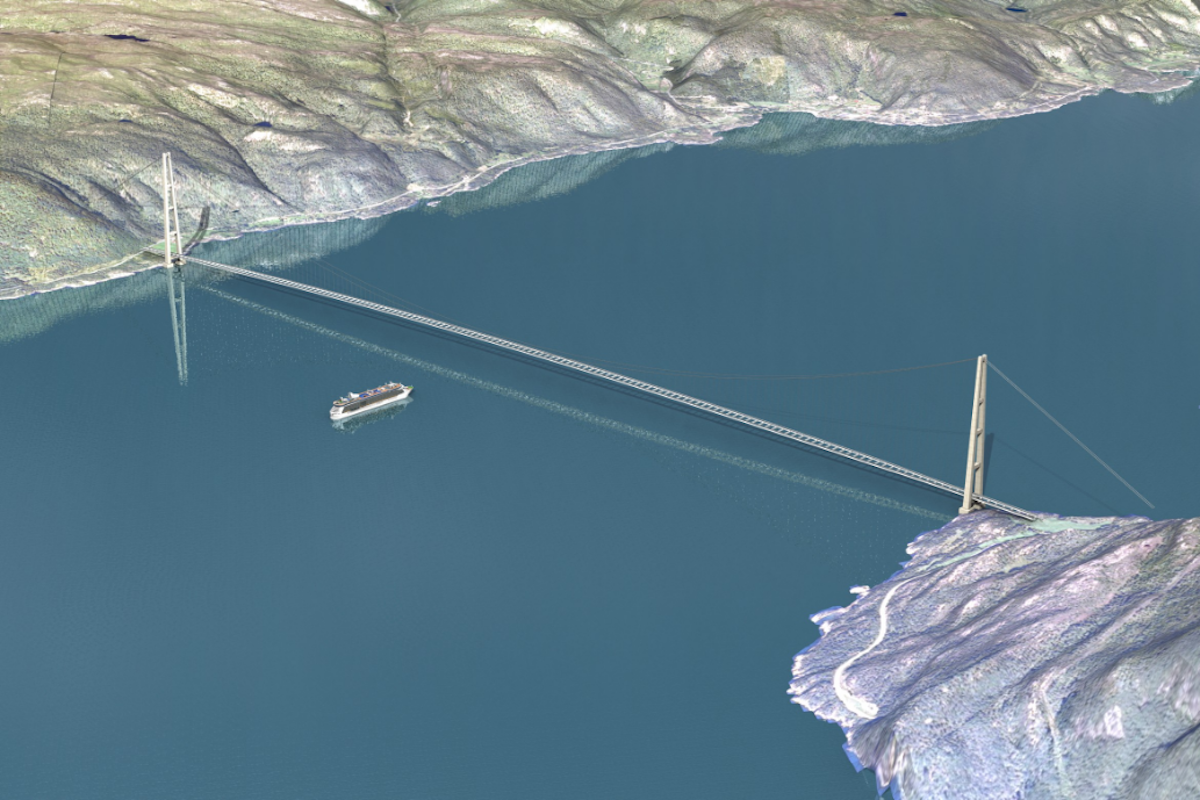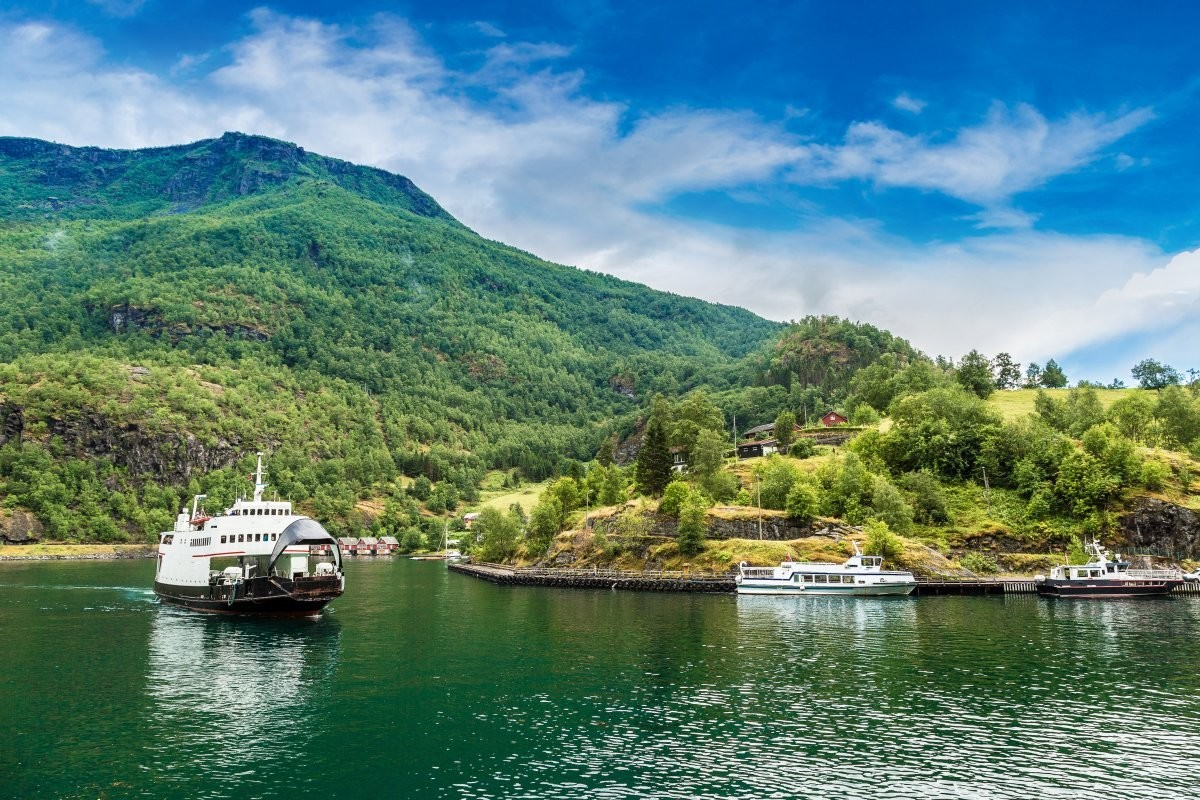Norway could build world-first floating tunnel
The west side of Norway is made up of 1,190 fjords, which, while beautiful, make it very hard to travel along the country’s coastline.
Currently, the drive from the southern city of Kristiansand to Trondheim in the north takes 21 hours and requires seven ferry crossings.
To make that drive easier, the Norwegian Public Roads Administration (NPRA) has proposed the world’s first underwater floating tunnel, which would be submerged in the Norwegian Sea. It is predicted to cost $25bn (around £19m) to build.
The tunnel is part of a series of proposed solutions for the Route E39 coastal highway devised by the NPRA.
[edit] What would it look like?
The floating underwater tunnel would consist of two 1,220m-long concrete tubes, submerged 20m below the surface of the Norwegian Sea.
Image: NPRA
Although no floating underwater tunnel like this has ever been built before, a British patent for a similar structure dates back around 100 years.
Image: NPRA
Underwater tunnels could be put in place across the fjords from Kristiansand in the south of Norway to Trondheim in the north.
Image: Google Maps
For motorists underwater, the experience would be similar to being in any other tunnel.
Image: NPRA
The tunnels would enter the bedrock beneath the fjord on each side.
Image: NPRA
The submerged tubes would be steadied either by being attached to floating pontoons on the surface of the sea or by cables attached to the sea floor..
Image: NPRA
There would be wide gaps between the pontoons to allow ferries to pass through.
Image: NPRA
Another option suggested by the NPRA is to combine an underwater tunnel with a bridge.
Image: NPRA
This solution is reminiscent of the Øresund which connects the Danish capital of Copenhagen to the Swedish capital of Malmö.
Image: NPRA
The NPRA is also considering creating a 3,700m-long suspension bridge, which would be three times the length of San Francisco’s Golden Gate bridge and double the current world record for a bridge’s length.
Image: NPRA
The towers on each end of this world-record-breaking suspension bridge would stand at 450m tall — around 150m taller than the Eiffel Tower.
Image: NPRA
The first proposed crossing is for Sognefjord which links up Oppedal with Lavik. By 2035, the crossings are set to be installed between many of the country’s fjords, according to Wired.
Sognefjord. (Image: Shutterstock / S-F)
[edit] About this article
This article was written by Will Heilpern, Features Writer, Business Insider, and is published in collaboration with Business Insider. The views expressed in this article are those of the author alone and not of the World Economic Forum. It was also published on the Future of Construction Knowledge Sharing Platform and the WEF Agenda Blog.
[edit] Related articles on Designing Buildings Wiki
- At grade.
- Adit.
- Caisson.
- Dredging.
- Excavating plant.
- Excavation.
- Groundworks.
- Ground conditions.
- Grouting in civil engineering.
- Invert.
- Railway engineering.
- Road construction.
- Sewer construction.
- Shotcrete technology.
- Substructure.
- Temporary works.
- Trench support.
- Trenchless technology.
- Tunnels of the world.
- Underpass construction.
- Underpinning.
Featured articles and news
RTPI leader to become new CIOB Chief Executive Officer
Dr Victoria Hills MRTPI, FICE to take over after Caroline Gumble’s departure.
Social and affordable housing, a long term plan for delivery
The “Delivering a Decade of Renewal for Social and Affordable Housing” strategy sets out future path.
A change to adoptive architecture
Effects of global weather warming on architectural detailing, material choice and human interaction.
The proposed publicly owned and backed subsidiary of Homes England, to facilitate new homes.
How big is the problem and what can we do to mitigate the effects?
Overheating guidance and tools for building designers
A number of cool guides to help with the heat.
The UK's Modern Industrial Strategy: A 10 year plan
Previous consultation criticism, current key elements and general support with some persisting reservations.
Building Safety Regulator reforms
New roles, new staff and a new fast track service pave the way for a single construction regulator.
Architectural Technologist CPDs and Communications
CIAT CPD… and how you can do it!
Cooling centres and cool spaces
Managing extreme heat in cities by directing the public to places for heat stress relief and water sources.
Winter gardens: A brief history and warm variations
Extending the season with glass in different forms and terms.
Restoring Great Yarmouth's Winter Gardens
Transforming one of the least sustainable constructions imaginable.
Construction Skills Mission Board launch sector drive
Newly formed government and industry collaboration set strategy for recruiting an additional 100,000 construction workers a year.
New Architects Code comes into effect in September 2025
ARB Architects Code of Conduct and Practice available with ongoing consultation regarding guidance.
Welsh Skills Body (Medr) launches ambitious plan
The new skills body brings together funding and regulation of tertiary education and research for the devolved nation.
Paul Gandy FCIOB announced as next CIOB President
Former Tilbury Douglas CEO takes helm.
UK Infrastructure: A 10 Year Strategy. In brief with reactions
With the National Infrastructure and Service Transformation Authority (NISTA).






